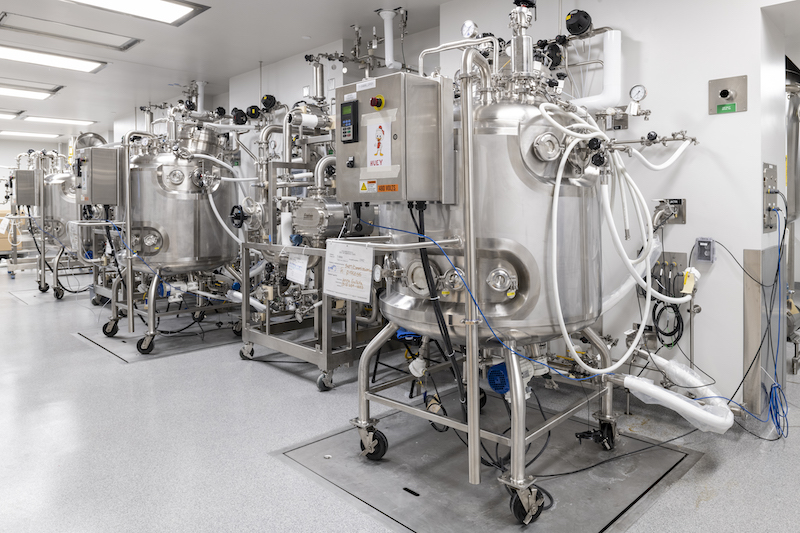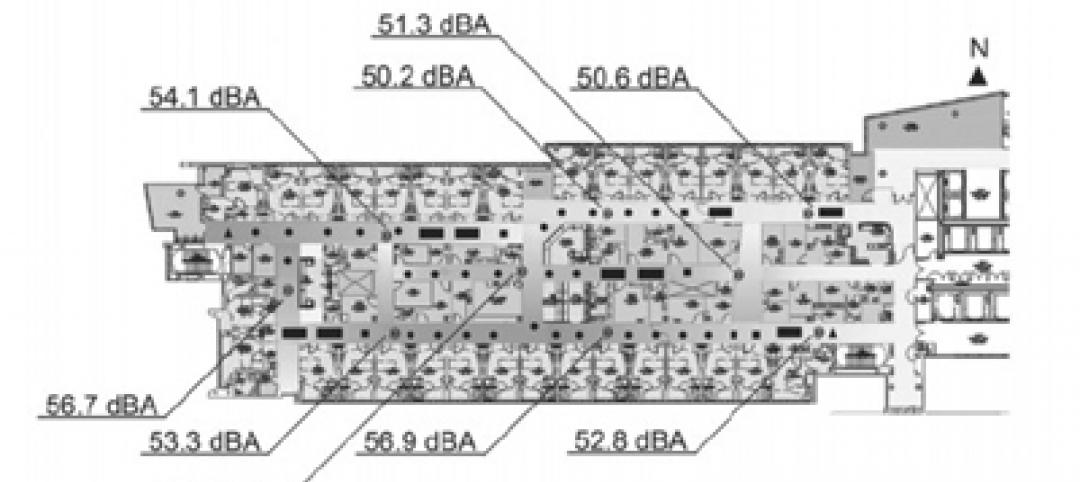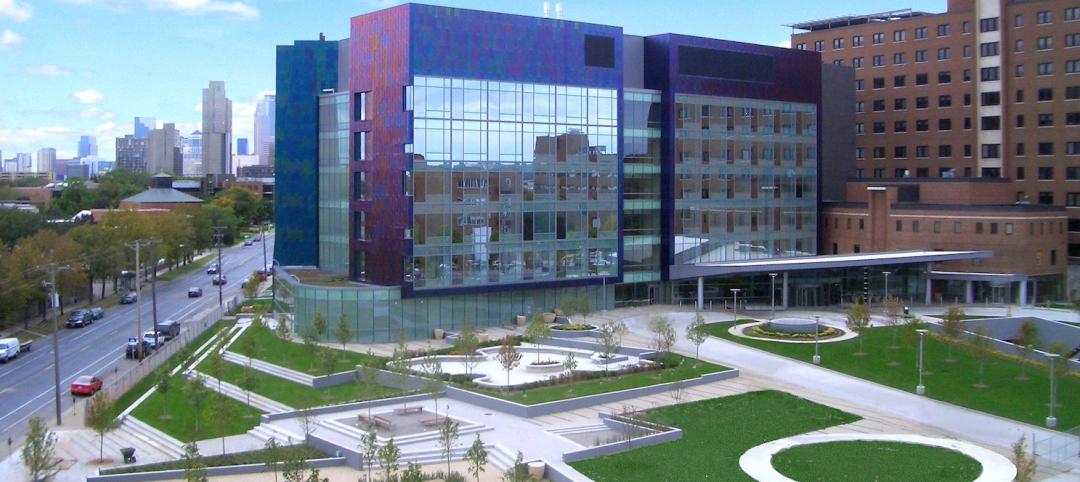More than two-thirds of U.S. households own at least one pet, and more than half own dogs. The American Pet Association estimates that Americans spent a record $99 billion on pet-related expenses in 2020, from food and toys to vet services. The animal care sector is big business that at least one AEC firm has been tapping into for a while.
CRB, headquartered in the heart of the so-called animal health corridor in Kansas City, Mo., has cultivated a specialty for working on biotech facilities that focus on the animal world. In that capacity, CRB has collaborated with a several other AEC firms, such as ESG and Power Construction on Fulton Labs, a life sciences campus in Chicago’s Fulton Market neighborhood. The campus hosts 724,714 rentable sf of dedicated lab and office space with an additional 57,000 sf of top-tier amenity space including a community garden, wellness center and stunning rooftop lounge.
Eric Danielson, CRB’s Director of Business Development, says that growth in this industry sector is coming from several directions that include the post-COVID study of monoclonal antibodies in animals. He adds that there’s also a lot of interest in gene and cell therapies, especially for companion pets. And on the food side, manufacturers are exploring “fresher options” that consumers are demanding and are willing to spend more on. These include alternative protein food types and products that can be sold less expensively at retail.
Danielson says his company is seeing more manufacturers take a holistic approach to animal health by, for example, getting into food products with pharmaceutical elements embedded into the ingredients.

CRB provided design services for this new 96,000-sf animal health biological production facility used to manufacture aerobe bacterins and viral antigens.
MULTIPLE REGULATORY BODIES
Animal care is a highly regulated business that, in the U.S., is overseen by the Food & Drug Administration and the Department of Agriculture. CRB has also worked for clients in Europe, South America, and Asia, each with its own rules and regs. So a big part of CRB’s job, says Danielson, is to make sure that its clients’ projects adhere to their markets’ regulatory requirements.
CRB relies mightily on reality capture, through BIM and Virtual Design and Construction (VDC) to, in Danielson’s words, “provide a digital understanding of the design for the day-to-day user.” These tools also reduced the need for physical on-site visits during the coronavirus pandemic, and are getting clients’ projects up and running faster at a time when speed to market is a critical competitive component.
IPD PRACTITIONER

A CRB employee on-site during the construction phase of a ONEsolution project for a major global animal health company.
To that end, within the past year CRB has rolled out SlateXpace, a platformed modular solution, primarily for multimodal facilities, whose plug-and-play components can be deployed without needing to shut down other parts of the building. “It reduces down time,” says Danielson. (A short video that illustrates how this works can be viewed here.)
CRB is also a proponent of Integrated Project Delivery (IPD) through its ONEsolution approach that brings together the company’s team of designers, engineers, and other experts to control quality, cost, and scheduling by focusing on lean project delivery based on core principles that optimize the client’s capital investment through improved execution, with shared risks and rewards.
Danielson—whose 20-plus years in the AEC space included stints with J.E. Dunn and as a municipal planner—says that his firm strives to avoid “falling into the trap of repeating the same production design standards. This limits innovation.” It is also always looking for ways to eliminate steps for a project to achieve regulatory compliance.
With regard to innovation and fresh thinking, a few weeks ago CRB elected four new members to its Board of Directors, three of whom are from outside the company, its first election of external members. "Together, their insights and fresh perspectives will challenge and strengthen us, resulting in continued high value for our clients and rewarding experiences for our employees," said Ryan Schroeder, CRB’s President.
The outside board members include Tim Hannan, Executive Vice President and CFO of New-Press & Gazette Company; Sandy Price, a retired Senior Vice President of Human Resources at Sprint; and Bob Uhler, a philanthropist and former Chairman of Great Lakes Dredge and Dock.
Related Stories
| Jul 19, 2013
Renovation, adaptive reuse stay strong, providing fertile ground for growth [2013 Giants 300 Report]
Increasingly, owners recognize that existing buildings represent a considerable resource in embodied energy, which can often be leveraged for lower front-end costs and a faster turnaround than new construction.
| Jul 18, 2013
Do third-corridor designs actually work for healthcare environments?
A recent study of a nursing unit assessed whether the space's third corridor does what it was intended to do: reduce noise and distraction to patients and nursing staff.
| Jul 12, 2013
12 award-winning healthcare projects [slideshow]
AIA's Academy of Architecture for Health announced the recipients of the 2013 AIA National Healthcare Design Awards.
| Jul 2, 2013
LEED v4 gets green light, will launch this fall
The U.S. Green Building Council membership has voted to adopt LEED v4, the next update to the world’s premier green building rating system.
| Jul 1, 2013
Report: Global construction market to reach $15 trillion by 2025
A new report released today forecasts the volume of construction output will grow by more than 70% to $15 trillion worldwide by 2025.
| Jun 28, 2013
Building owners cite BIM/VDC as 'most exciting trend' in facilities management, says Mortenson report
A recent survey of more than 60 building owners and facility management professionals by Mortenson Construction shows that BIM/VDC is top of mind among owner professionals.
| Jun 20, 2013
Virtual meetings enhance design of University at Buffalo Medical School
HOK designers in New York, St. Louis and Atlanta are using virtual meetings with their University at Buffalo (UB) client team to improve the design process for UB’s new School of Medicine and Biomedical Sciences on the Buffalo Niagara Medical Campus.
| Jun 19, 2013
New York City considers new construction standards for hospitals, multifamily buildings
Mayor Michael Bloomberg’s administration has proposed new building codes for hospitals and multifamily dwellings in New York City to help them be more resilient in the event of severe weather resulting from climate change.
| Jun 17, 2013
DOE launches database on energy performance of 60,000 buildings
The Energy Department today launched a new Buildings Performance Database, the largest free, publicly available database of residential and commercial building energy performance information.















